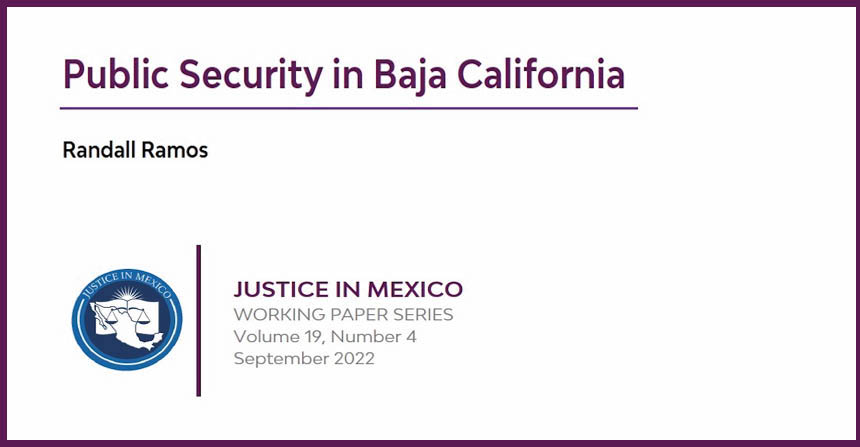08/28/10 —On Friday, the Mexican government reported that 80% of the 28,000 drug killings from 2006 through July 31 have been concentrated in just 6% of the country’s 2,456 municipalities. These revelations constitute the first official mapping of Mexico’s drug war, and corroborate recent January and August reports by the Justice in Mexico Project regarding the distribution of drug violence in Mexico. Revealing previously classified official statistics on the violence, Alejandro Poire, the technical secretary of the National Public Security Council, indicated that there currently are seven violent regional conflicts among Mexican drug cartels, with 22,701 officially documented killings concentrated in just 162 municipalities located in major drug-trafficking areas.
Authorities noted that the largest share of this violence is attributable to conflicts associated with the so-called Sinaloa cartel. Currently, 8,236 homicides —more than a third of killings in the 162 municipalities— are attributable to that organization’s conflict with the so-called Juárez cartel, as the two groups fight for control of the lucrative trafficking corridor centered in Ciudad Juarez, located across the border from the U.S. city of El Paso, Texas.

The Sinaloa cartel is also fighting their former partners from the Beltran Leyva organization (BLO), resulting in 5,864 people have died in Sinaloa, Sonora, Durango, Nayarit and parts of Jalisco and Guerrero, where, who split off on their own in 2008. Additionally, the government also attributed 3,199 killings to the conflict between the Sinaloa and the Gulf cartels, which is spread throughout the country in major producing and trafficking states like Durango, Coahuila and Sinaloa, as well as southern entry points for drugs like Guerrero, Tabasco, Quintana Roo and Chiapas. Meanwhile, in the Sinaloa cartel’s fight against the Arellano Felix organization (AFO) in Baja California, the government identified 1,798 killings resulting from this conflict.
 In addition, Poire noted that conflicts among the Gulf cartel, the Zeta organization, La Familia Michoacana (LFM) organization, and the BLO have resulted in further violence elsewhere in Mexico. Clashes between the Gulf, Zeta, and LFM organizations have resulted in 1,744 killings since September 2006, when the LFM broke out on its own, resulting in clashes and gruesome violence in the Mexican states of Michoacán, Guerrero and Guanajuato. Much of the violence in Michoacán is reportedly concentrated in the port city of Lázaro Cardenas, where conflicts associated with the LFM organization have produced 1,538 thousand killings.
In addition, Poire noted that conflicts among the Gulf cartel, the Zeta organization, La Familia Michoacana (LFM) organization, and the BLO have resulted in further violence elsewhere in Mexico. Clashes between the Gulf, Zeta, and LFM organizations have resulted in 1,744 killings since September 2006, when the LFM broke out on its own, resulting in clashes and gruesome violence in the Mexican states of Michoacán, Guerrero and Guanajuato. Much of the violence in Michoacán is reportedly concentrated in the port city of Lázaro Cardenas, where conflicts associated with the LFM organization have produced 1,538 thousand killings.
Moreover, starting this year, the late-2009 splitting of an alliance between the Gulf cartel and the Zetas has resulted in 1,328 killings concentrated in the states of Tamaulipas and Nuevo Leon. Also, violence between the BLO and the LFM have produced 56 homicides in Guerrero and Morelos.
Authorities indicated that they were unable to determine the cause of a very small proportion —just 476, or two percent— of the 22,701 drug related killings analyzed in their report. They also noted that nearly a third of the killings (8,344) were concentrated in the state of Chihuahua —and especially its largest city, Ciudad Juárez— due to conflicts between the Sinaloa and Juárez cartels. The next largest share —3,790 killings or 13% of the total— were concentrated in the state of Sinaloa. 890 killings, or three percent, were concentrated in Tamaulipas, where President Calderon sent more federal police and soldiers this week after authorities discovered the bodies of 72 migrants. Officials reported that 6.3% (1,810) and 2.6% (753) of the murders were concentrated in the states of Baja California and Nuevo León, respectively.
The government’s revelations were presented at Mexico’s Campo Marte Military Base, located adjacent to Los Pinos (the official residence of the Mexican president), during the conclusion of a series of public dialogues involving government officials, businessmen, academics, and civic leaders. These dialogues responded partly to recent criticisms of the government’s failure to divulge statistical information on drug-related homicides, which the Justice in Mexico Project has helped to document since 2007. For a full list of the project’s maps and data on Mexico’s recent drug violence, please visit the Trans-Border Institute’s website.
Ramos, Jorge. “Gobierno revela mapa de guerra entre cárteles.” El Universal. Mexico City, August 28, 2010.
Milenio (2010). “28 mil 353 ejecutados en el sexenio. Radiografía del crimen organizado.” Milenio. Mexico City, August 28, 2010.
Duran-Martínez, Angelica, Gayle Hazard, et al. (2010). 2010 Mid-Year Report on Drug Violence in Mexico. San Diego, Trans-Border Institute.
Shirk, David A. (2010). Drug Violence in Mexico: Data and Analysis from 2001-2009. San Diego, Trans-Border Institute.




